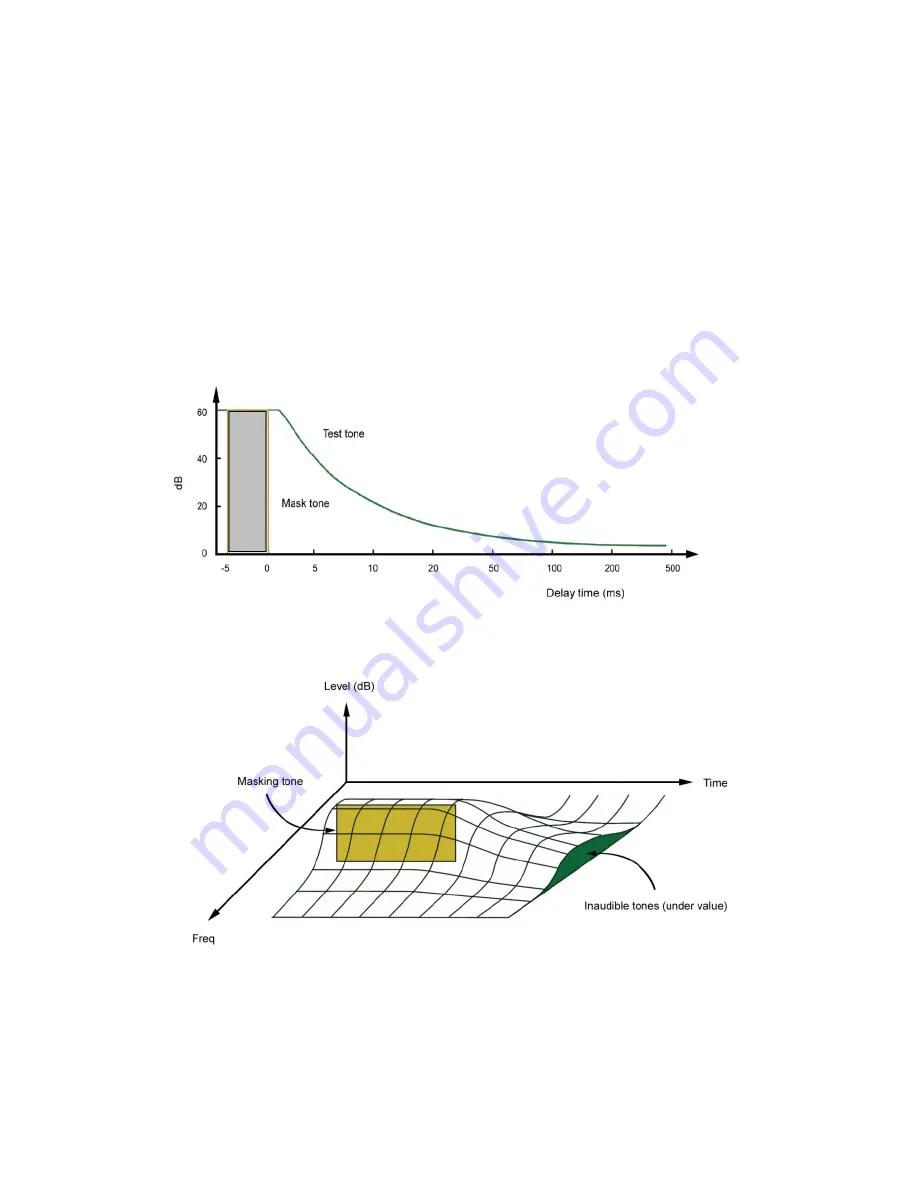
AUDIO CODING REFERENCE |
67
To benefit from the masking effects, perceptual coders use a filter bank to divide the input audio into multiple
bands for analysis and processing. The maximum masked noise level is calculated depending on the spectral
content, and the available bits are allocated so as to keep the quantization noise below the masking threshold at
every point in the spectrum.
While coding efficiency increases with more bands and better frequency resolution, the time domain resolution de-
creases simultaneously, owing to an inevitable side effect of the band filtering process: higher frequency resolution
requires a longer time window – which limits time resolution. Happily, masking works also in the time domain. A
short time before and a longer time after a tone is switched on and off, other signals below a threshold amplitude
level are not noticeable. Filter banks with higher frequency resolution naturally exploit the ear’s time-masking
properties.
Making effects in the time domain. Masking occurs both before and after the masking signal.
The combined results of time and frequency versus masking. Signals under the curve are inaudible.
















































